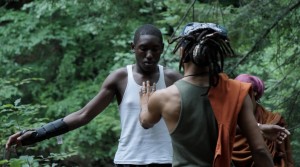
Courtesy of Our City Film Festival
"Fly By Light" follows 15 D.C. students as they leave the city for the West Virginia countryside for the first time.
What: Our City Film Festival.
When: Saturday and Sunday. Check the festival’s website for exact times.
Where: The Goethe Institute, 812 7 St. NW.
Cost: Tickets cost $10 per film.
Why you should go: The film festival screens films that take place in the District, showcasing the diversity of D.C. DCentric readers may be interested in seeing: “The Vigil,” which follows a Pakastani classical dancer who returns to her homeland from her adopted home in D.C.; “A Monument for Martin Luther King, Jr.,” a video essay on the King memorial and the role of memorials; and “Fly By Light,” a documentary-in-progress following 15 D.C. students who, for the first time, leave the city for the countryside of West Virginia.
Other events to consider: The National Park Service is celebrating the birthday of Frederick Douglass, who lived in D.C., with a full program of speeches and music. The free event takes place 10 a.m. to 4 p.m. at his home (now the Frederick Douglass National Historic Site) at 1411 W St. SE.










